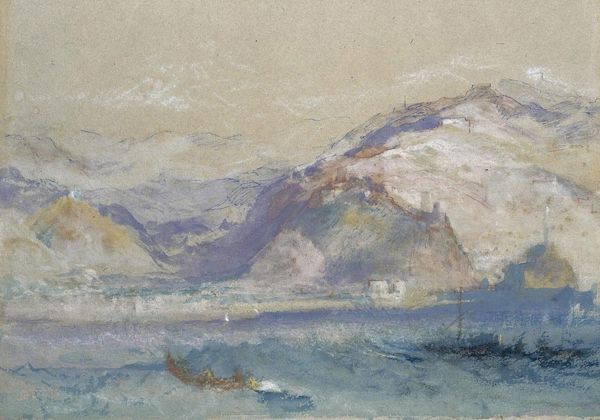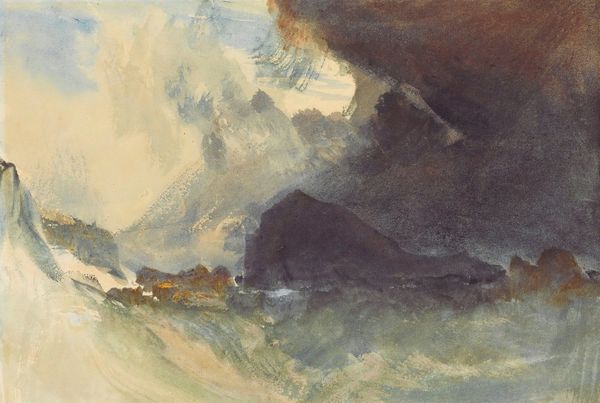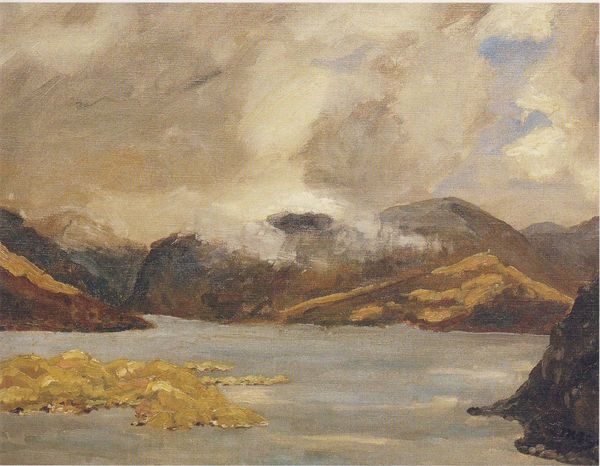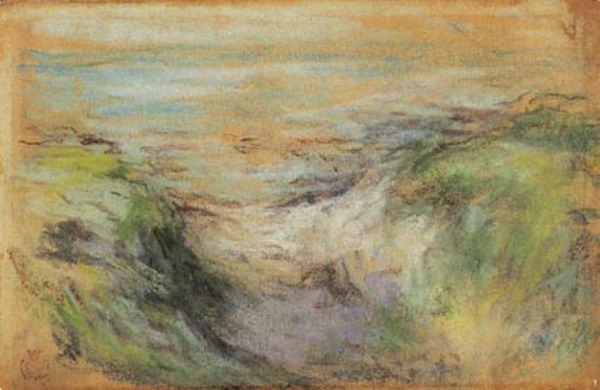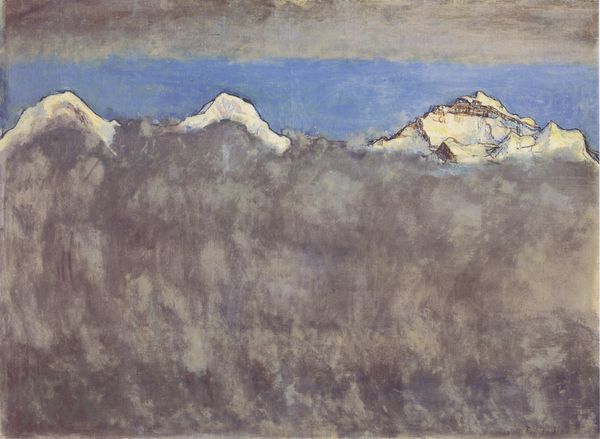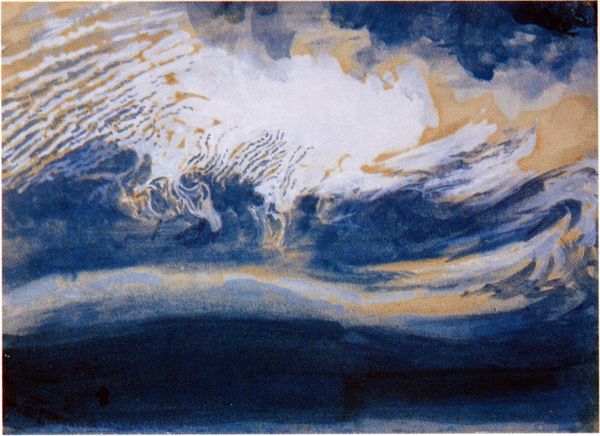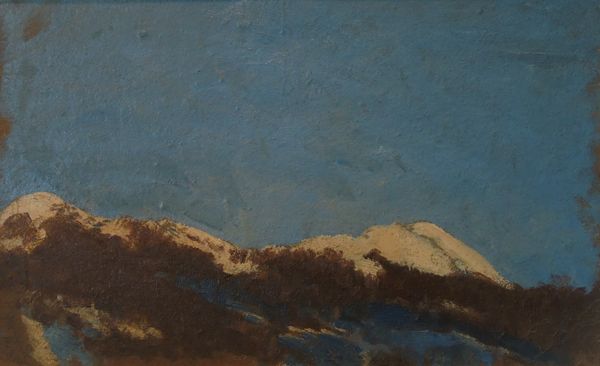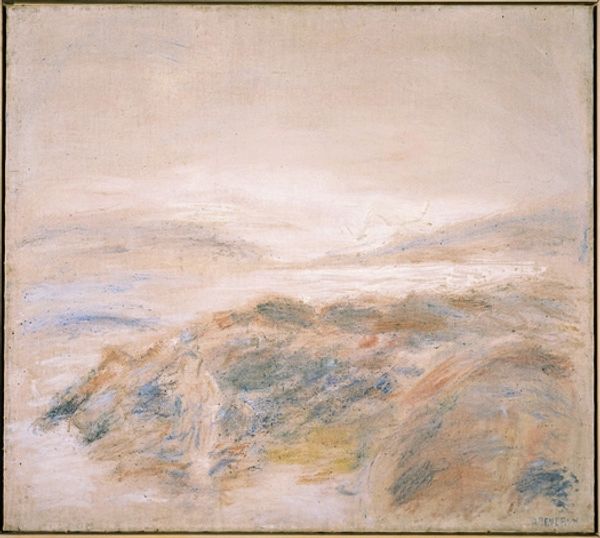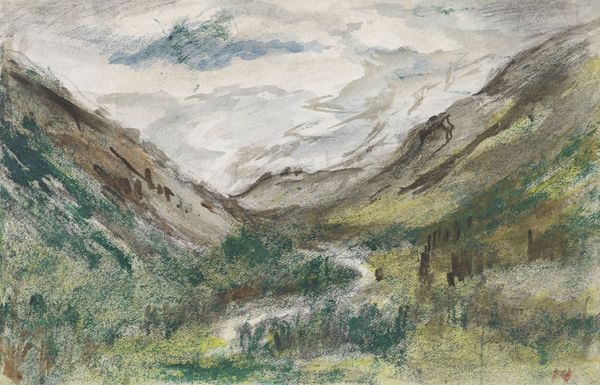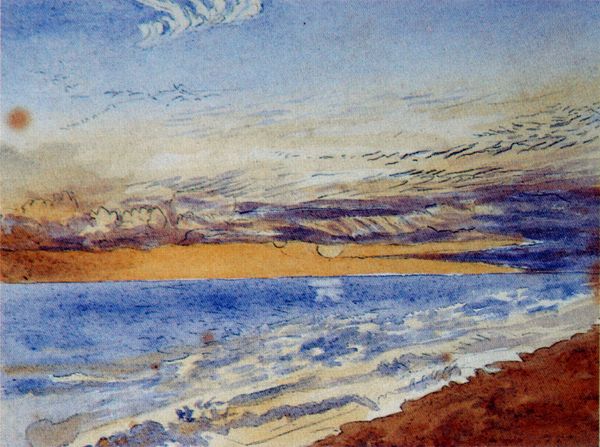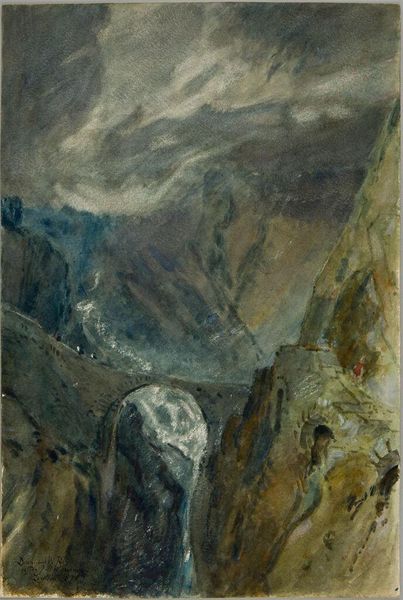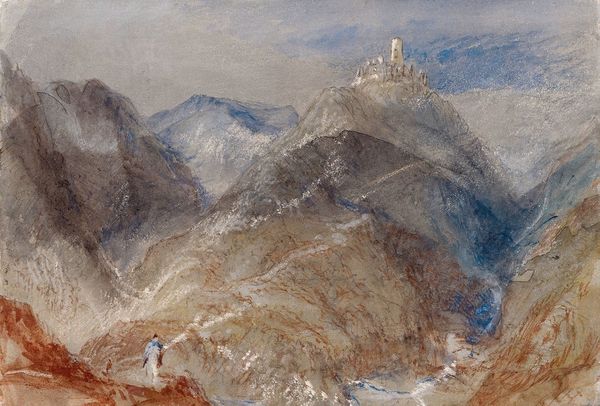
Copyright: Public domain
Editor: Here we have John Ruskin's "Moonlight Chamonix," created in 1888, using watercolor. It’s such a moody, almost brooding landscape, isn't it? What really strikes you when you look at this piece? Curator: What immediately catches my eye is how this landscape diverges from traditional landscape painting, wouldn't you agree? Consider its production at a time of rapid industrialization. How might Ruskin, known for his social critique, be using this image of sublime nature as a commentary? Editor: That's a great point. The sheer scale and dramatic lighting, versus, say, the belching smoke of factories... so it’s more than just a pretty picture? Curator: Exactly. Ruskin was deeply concerned with the social and environmental impact of industrialization. He saw beauty and spiritual value in the natural world, and here in "Moonlight Chamonix," does the somewhat chaotic brushwork reflect a romantic ideal or perhaps a society under pressure? Editor: I see what you mean. The mountain isn't just a mountain; it’s a symbol of something larger, perhaps something threatened. What was the public reception like back then? Curator: It was a complicated moment. While Ruskin's views resonated with some, others saw him as an idealist out of touch with modern progress. These watercolors, exhibited during his lifetime, often sparked debate about the role of art in society. It's interesting to consider his personal connection with the landscape, how his biography informs our understanding. Editor: So, looking at this piece, we’re really looking at Ruskin's social and political beliefs about his time? It's made me think about the landscapes I see differently. Thanks. Curator: Indeed. By considering Ruskin's background and the context of his era, we can appreciate "Moonlight Chamonix" as a powerful statement about nature, society, and the artist's place within them. It encourages a richer understanding of the relationship between art and its time.
Comments
No comments
Be the first to comment and join the conversation on the ultimate creative platform.
